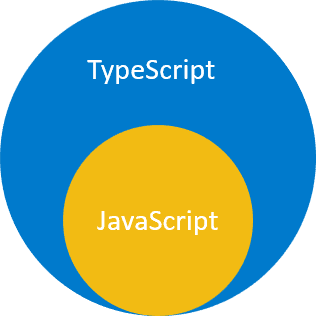Typescript Getting Started

Introduction to TypeScript
TypeScript builds on top of JavaScript. First, you write the TypeScript code. Then, you compile the TypeScript code into plain JavaScript code using a TypeScript compiler.
TypeScript uses the JavaScript syntaxes and adds additional syntaxes for supporting Types.

TypeScript improves your productivity while helping avoid bugs
For example, if users entered 10 and 20, the add() function would return 1020, instead of 30.
The reason is that the input1.value and input2.value are strings, not numbers. When you use the operator + to add two strings,
it concatenates them into a single string.
function add(x, y) {return x + y;}let result = add(input1.value, input2.value);console.log(result); // result of concatenating strings// When you use TypeScript to explicitly specify the type for the parameters like this:function add(x: number, y: number) {return x + y;}
TypeScript brings the future JavaScript to today
TypeScript supports the upcoming features planned in the ES Next for the current JavaScript engines. It means that you can use the new JavaScript features before web browsers (or other environments) fully support them.
Install
Install Node.js
Install TypeScript compiler
To install the TypeScript compiler
npm install -g typescript
Check the current version
tsc --vLive Server extension
TypeScript “Hello, World!”
index.html
<!DOCTYPE html><html lang="en"><head><meta charset="UTF-8"><meta name="viewport" content="width=device-width, initial-scale=1.0"><title>TypeScript: Hello, World!</title></head><body><script src="app.js"></script></body></html>
app.ts
let message: string = 'Hello, World!';// create a new heading 1 elementlet heading = document.createElement('h1');heading.textContent = message;// add the heading the documentdocument.body.appendChild(heading);
Compile the app.ts file:
tsc app.ts
Why TypeScript
TypeScript adds a type system to help you avoid many problems with dynamic types in JavaScript.
TypeScript implements the future features of JavaScript a.k.a ES Next so that you can use them today.
Tags
Share
Table Of Contents
Related Posts
Quick Links
Legal Stuff
Social Media
